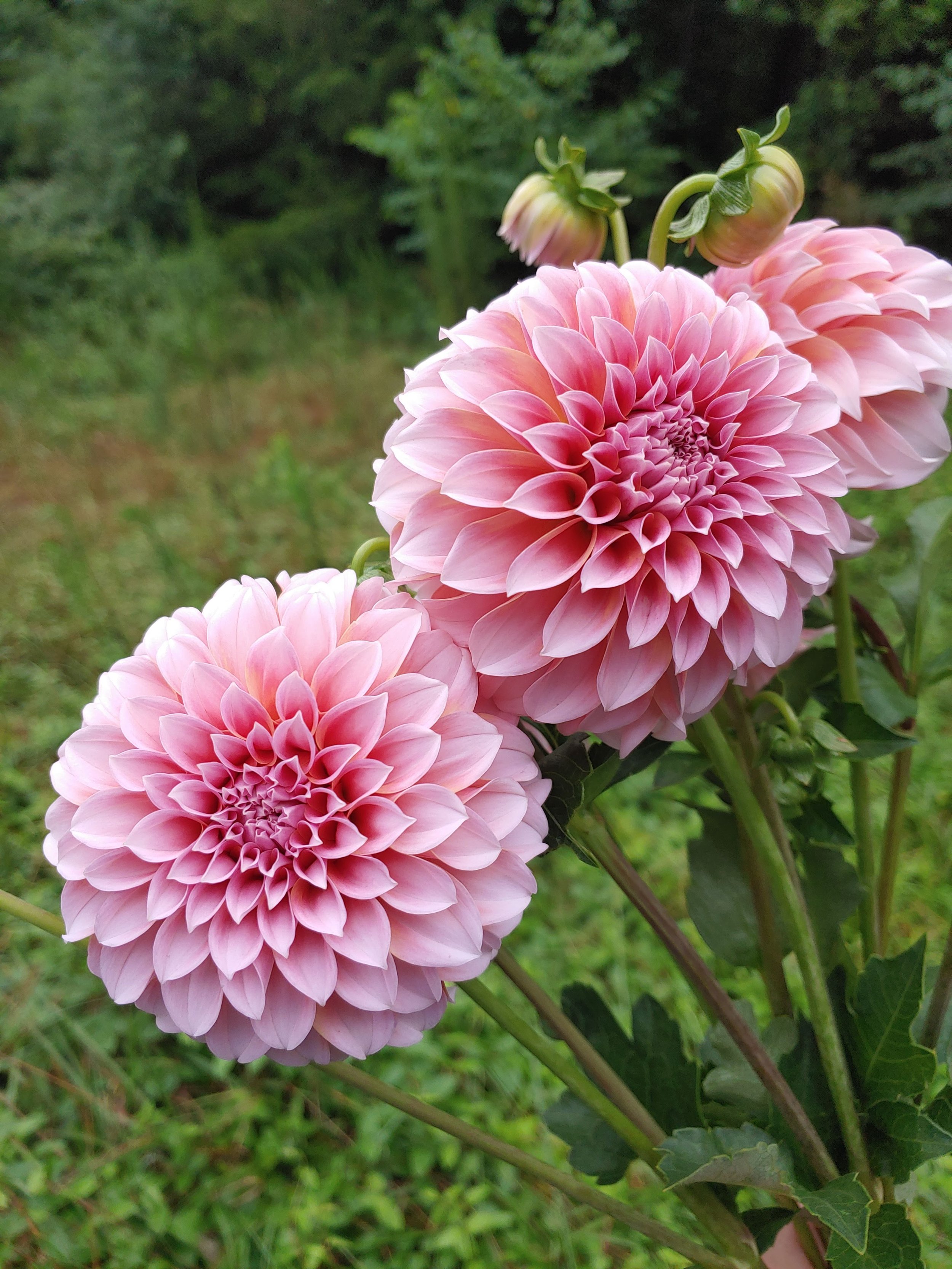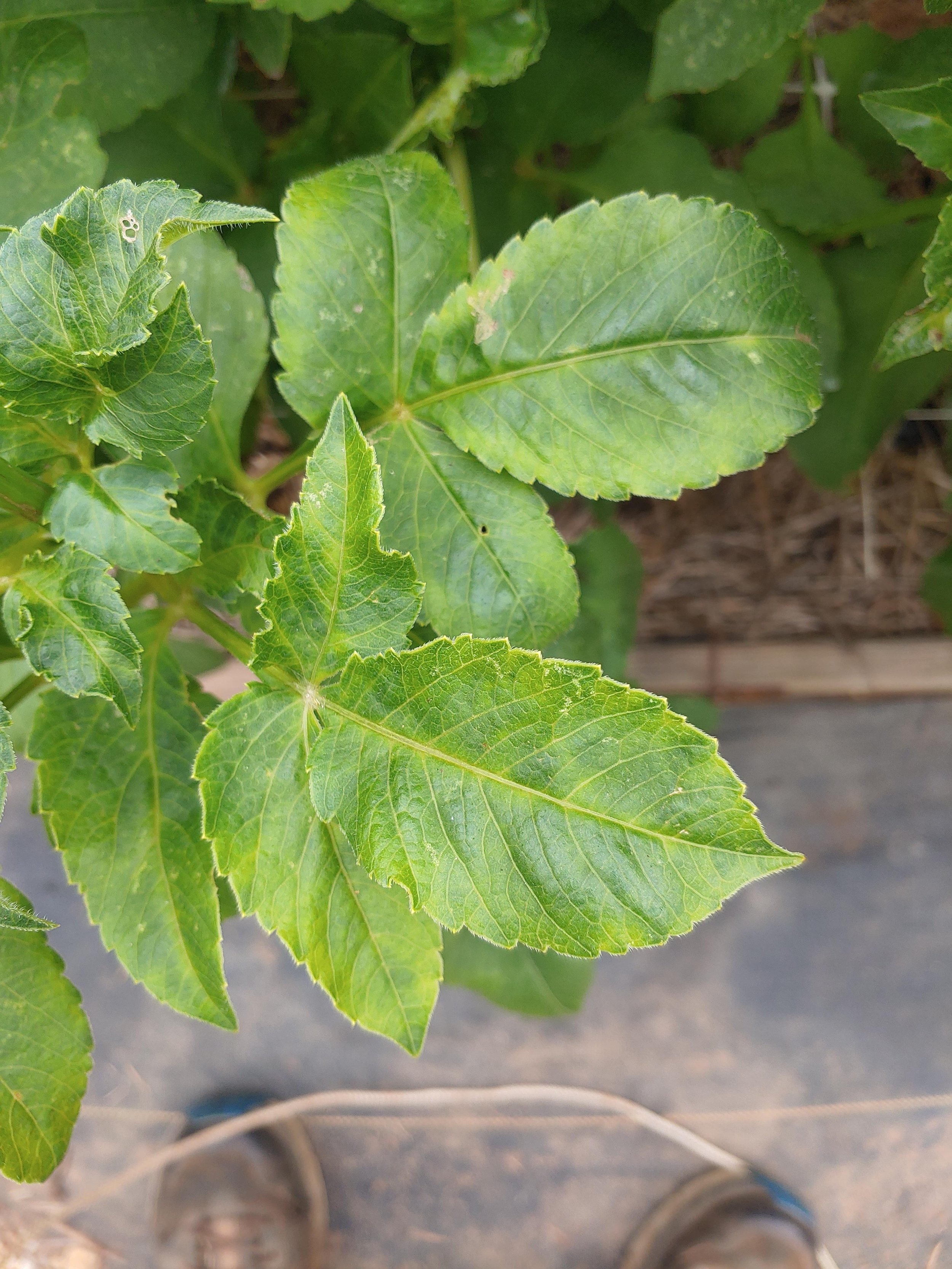You’ve planned, worked hard and now your dahlias are finally in bloom! We’ve come to the last section of our Dahlia Game Plan for this winter. Let’s talk about how/when to harvest your dahlias and how to care for them once cut!
Hilltop Lost Treasure
Harvesting your Flowers:
When cutting stems for cut flowers, you want to cut deep into the plant. Every time I show a new employee how long to cut, there is always an expression of surprise on their face. We use our arms as a measure and cut between the elbow and mid-bicep - kinda’ depends on how long your arms are! Cutting deep into the plant like this encourages the plant to produce more long stems. If you cut shorty stems, then the new stems are going to be shorter than what you cut. So although it may feel like you are taking a lot- you gotta cut deep for continued long stems.
(This is why we’ve spent time setting up that fertilizer regimen- we need to give back to the plants b/c we are expecting a lot out of them. Don’t forget to Feed!!)
Stage of harvest: It varies for different forms but here’s some basic tips-
Ball/Rounded Shapes - 2/3 open, when petals have begun to curve backwards
Decoratives- 50% open
If pollen is already pushing out of the center, then you’ve waited too late.
Blooms will continue to open about another 20%, some more than this.
When to harvest: Cut stems early in the morning- plants are higher in sugars and hydration during that time. Cut before you hit 85 degrees if possible. Place cut stem into water after cutting. If you have to wait more than a few minutes after cutting before getting them into water, recut the stems.
Where to harvest: Cut above a leaf node- this will encourage regrowth for more stems/blooms and keep your plant tidy as you go, remove any foliage that will be below the water line.
Omega
After Harvesting Your Flowers (Post-Harvest Care):
For the home grower:
Cutting into water with flower food helps extend vase life. Place bucket or vase in a cool dark room for a few hours to let blooms hydrate before using or displaying. Chrysal and Floralife are great brands and are easy to find for flower food.
Using an old refrigerator as a cooler and conditioning blooms over night at around 40-45 degrees will add 1-2 days to your average vase life.
Change your water at least every other day, add more flower food. Keep in a cooler spot and away from heat or high direct light.
For the commercial grower:
Harvest early in the morning
Cut into buckets with water and hydrating solution. (Chrysal Professional #2 Transport and Display Solution or Floralife 200)
Once blooms are dry, place into flower cooler for at least overnight, preferably 24 hours.
Store for 3-4 days, no more before selling/delivering to customer. Try to move blooms within 2-3 days of harvest, especially for larger blooms.
Recommend customers use flower food to extend vase life.
Try to ascertain end use to determine when to cut for best results.
Gerrie Hoek
Vase Life: Average vase life on a dahlia is around 5 days. Some varieties/forms last longer, some less. Also blooms last longer when it’s cooler outside and the plants are well-hydrated. Warm temps mean lower vase life unfortunately. But it’s good to know what to expect!
And the positive thing is that— You can just go to your beautiful dahlia garden and cut some more!!























